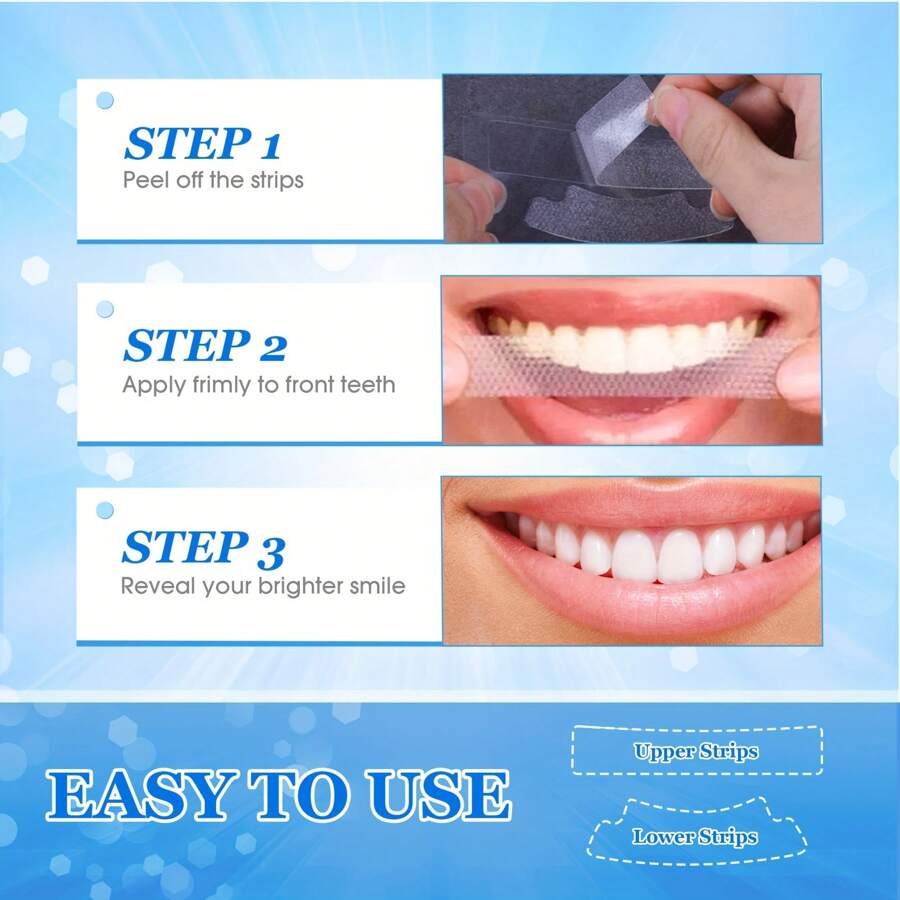Teeth whitening strips have surged in popularity over the past few years as a convenient and relatively affordable method for achieving a brighter smile. With a simple application routine, many users wonder about the logistics of wearing these strips, especially when it comes to more extended wear, like overnight applications. The deep-set question arises: Can I sleep with teeth whitening strips on? This inquiry not only reflects a common curiosity but also hints at broader implications surrounding dental health and aesthetics.
Firstly, let’s delve into the primary concern: the safety of wearing whitening strips overnight. Many brands recommend wearing these strips for a designated period, typically between 30 minutes to an hour, during the day. The chemicals involved, primarily hydrogen peroxide or carbamide peroxide, are effective at breaking down stains; however, prolonged exposure can lead to increased tooth sensitivity and gum irritation. This reaction stems from the potent nature of these whitening agents — while they do their job of lightening teeth, they can also have adverse effects if not used as directed.
For those tempted to leave whitening strips on while they sleep, it is crucial to ponder the balance between convenience and potential discomfort. The materials that make up the strips can lead to the retention of these bleaching agents against the enamel for too long, which may exacerbate sensitivity. Over time, this might result in a condition known as dentin hypersensitivity. The ramifications could range from mild discomfort to significant pain, causing individuals to question whether the pursuit of a whiter smile is worth the potential risk to their dental health.
Now let’s explore the very composition of these strips. Most whitening strips contain a polyethylene base impregnated with whitening agents, which are designed for short-term use. The creator’s intent is for them to adhere snugly to the teeth, offering a controlled and measured whitening experience. Their efficacy typically diminishes with time: the longer they’re left on, the lesser their benefits and the greater the risk. Hence, although the allure of waking up to a dazzling smile is tempting, it’s essential to heed manufacturer instructions and dental advice.
Moreover, the real treasures lie in understanding how tooth whitening works at a molecular level. The active ingredients in these strips infiltrate the enamel’s porous structure, breaking down staining compounds, especially those from food and drink. Factors such as age, diet, and even oral hygiene significantly influence one’s natural tooth color and, by extension, the results of whitening treatments. Those who consume staining substances like coffee, red wine, or tobacco may find themselves more fascinated with the whitening process, fueling a desire to experiment with applications outside standard guidelines.
Additionally, overnight use of whitening strips may hold appeal for those looking for a more substantial transformation without having to follow a rigorous daytime regimen. The modern lifestyle is often chaotic, leaving little time for self-care. However, it’s worth discussing the psychological perspectives at play. People are undeniably captivated by the visual power of a bright smile — it symbolizes confidence, approachability, and overall health. Thus, the potential for rapid results might lure one into exploring unconventional strategies, despite the potential pitfalls.
In the quest for improved oral aesthetics, many might overlook proper dental care and routine. Even the best whitening treatment won’t yield satisfactory results if not paired with excellent oral hygiene practices. Regular brushing, flossing, and routine dental check-ups are paramount when engaging in any tooth-whitening endeavor. Therein lies another layer of fascination—how much effort individuals are willing to invest in their appearances and the lengths to which they will go for self-improvement.
Should you find yourself curious about overnight whitening methods, there are alternatives to consider that align more closely with dental health standards. Some brands have developed specialized overnight whitening solutions, designed explicitly for prolonged wear. These formulations typically feature lower concentrations of active agents, providing safer options while you sleep. Such innovations suggest a growing awareness within the cosmetic dental field towards balancing efficacy with safety.
It’s also crucial to remember that oral health extends beyond just the teeth. Before proceeding with any whitening treatment, consulting with a dental professional is advisable. They can provide personalized insights based on individual dental conditions and predispositions to sensitivity or other issues. This preventative measure can lead to a more harmonious relationship with dental aesthetics, moving beyond mere appearance to genuine health and well-being.
In conclusion, while the urge to sleep with whitening strips on highlights a significant interest in attaining a sparkling smile, heedful consideration of the associated risks is vital. The quest for cosmetic enhancement must be navigated carefully, balancing the allure of instant gratification with the fundamental principles of dental health. Educating oneself about the products and their effects empowers individuals to make informed decisions, combining enthusiasm for beauty with the wisdom of prudent oral care.
Ultimately, a bright smile is not merely a cosmetic accessory—it’s a reflection of confidence, health, and, most importantly, care. So, while the thought of using whitening strips overnight is indeed captivating, ensuring that we prioritize the health of our teeth and gums should always trump the quest for aesthetics.
